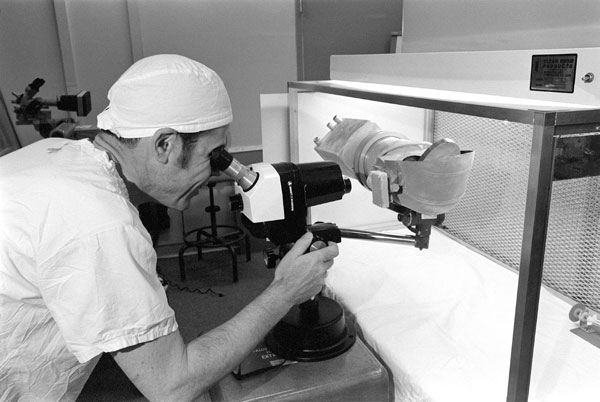Slice of History: Surveyor 3 Camera Returned from the Moon
Tuesday, January 24th, 2012
Each month in “Slice of History” we feature a historical photo from the JPL Archives. See more historical photos and explore the JPL Archives at https://beacon.jpl.nasa.gov/.

Surveyor 3 Camera Returned from the Moon — Photograph Number P-10709B
In November 1969 Apollo 12 astronauts Alan Bean and Pete Conrad landed on the moon less than 600 feet from NASA’s Surveyor 3 spacecraft, which had been there since April 1967. They removed the camera, some cable and tubing, and the trenching scoop from the lander and brought them back to Earth so that the effects of prolonged lunar exposure could be studied by Hughes Aircraft Company (the spacecraft prime contractor) and NASA’s Jet Propulsion Laboratory. The Surveyor 3 camera was kept under quarantine and studied for several weeks at the Lunar Receiving Laboratory in Houston. Then it was shipped to the Hughes facility in Culver City, Calif. This photo was taken in January 1970, probably at the Hughes facility, where Hughes and JPL employees photographed, disassembled and studied the camera in detail.
This post was written for “Historical Photo of the Month,” a blog by Julie Cooper of JPL’s Library and Archives Group.





















